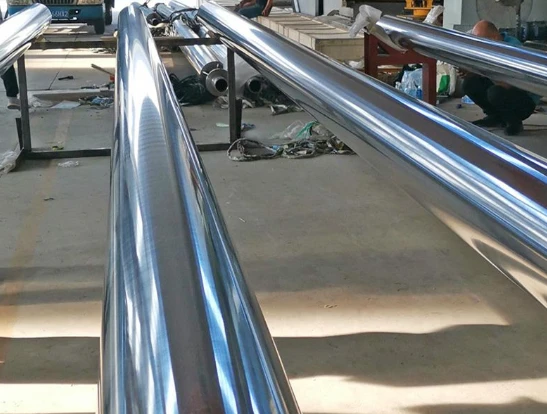
-
 Afrikaans
Afrikaans -
 Albanian
Albanian -
 Amharic
Amharic -
 Arabic
Arabic -
 Armenian
Armenian -
 Azerbaijani
Azerbaijani -
 Basque
Basque -
 Belarusian
Belarusian -
 Bengali
Bengali -
 Bosnian
Bosnian -
 Bulgarian
Bulgarian -
 Catalan
Catalan -
 Cebuano
Cebuano -
 China
China -
 China (Taiwan)
China (Taiwan) -
 Corsican
Corsican -
 Croatian
Croatian -
 Czech
Czech -
 Danish
Danish -
 Dutch
Dutch -
 English
English -
 Esperanto
Esperanto -
 Estonian
Estonian -
 Finnish
Finnish -
 French
French -
 Frisian
Frisian -
 Galician
Galician -
 Georgian
Georgian -
 German
German -
 Greek
Greek -
 Gujarati
Gujarati -
 Haitian Creole
Haitian Creole -
 hausa
hausa -
 hawaiian
hawaiian -
 Hebrew
Hebrew -
 Hindi
Hindi -
 Miao
Miao -
 Hungarian
Hungarian -
 Icelandic
Icelandic -
 igbo
igbo -
 Indonesian
Indonesian -
 irish
irish -
 Italian
Italian -
 Japanese
Japanese -
 Javanese
Javanese -
 Kannada
Kannada -
 kazakh
kazakh -
 Khmer
Khmer -
 Rwandese
Rwandese -
 Korean
Korean -
 Kurdish
Kurdish -
 Kyrgyz
Kyrgyz -
 Lao
Lao -
 Latin
Latin -
 Latvian
Latvian -
 Lithuanian
Lithuanian -
 Luxembourgish
Luxembourgish -
 Macedonian
Macedonian -
 Malgashi
Malgashi -
 Malay
Malay -
 Malayalam
Malayalam -
 Maltese
Maltese -
 Maori
Maori -
 Marathi
Marathi -
 Mongolian
Mongolian -
 Myanmar
Myanmar -
 Nepali
Nepali -
 Norwegian
Norwegian -
 Norwegian
Norwegian -
 Occitan
Occitan -
 Pashto
Pashto -
 Persian
Persian -
 Polish
Polish -
 Portuguese
Portuguese -
 Punjabi
Punjabi -
 Romanian
Romanian -
 Russian
Russian -
 Samoan
Samoan -
 Scottish Gaelic
Scottish Gaelic -
 Serbian
Serbian -
 Sesotho
Sesotho -
 Shona
Shona -
 Sindhi
Sindhi -
 Sinhala
Sinhala -
 Slovak
Slovak -
 Slovenian
Slovenian -
 Somali
Somali -
 Spanish
Spanish -
 Sundanese
Sundanese -
 Swahili
Swahili -
 Swedish
Swedish -
 Tagalog
Tagalog -
 Tajik
Tajik -
 Tamil
Tamil -
 Tatar
Tatar -
 Telugu
Telugu -
 Thai
Thai -
 Turkish
Turkish -
 Turkmen
Turkmen -
 Ukrainian
Ukrainian -
 Urdu
Urdu -
 Uighur
Uighur -
 Uzbek
Uzbek -
 Vietnamese
Vietnamese -
 Welsh
Welsh -
 Bantu
Bantu -
 Yiddish
Yiddish -
 Yoruba
Yoruba -
 Zulu
Zulu
Jan . 30, 2025 01:06
Back to list
mandrel
The world of industrial manufacturing and engineering is vast, with tools and components playing a crucial role in ensuring accuracy and efficiency. Among these, the mandrel stands out as an essential tool used in various applications, from precision engineering to complex manufacturing processes.
Furthermore, innovation in materials and design have expanded the applications of mandrels. Traditionally made from steel, modern mandrels may incorporate composite materials to improve durability and reduce weight. Innovations such as these increase the mandrel's applicability across various industries, including automotive and medical devices, where even a slight miscalculation can have significant consequences. Manufacturers now offer customized mandrels tailored to specific industrial needs, further enforcing their expert value proposition. Authoritatively speaking, the significance of mandrels goes beyond their immediate functionality. Their design and material impact operational efficacy, cost-effectiveness, and even energy consumption during production. Consequently, they represent a cornerstone in sustainable manufacturing practices. Industries are increasingly looking for ways to minimize waste and energy usage, and mandrels contribute by ensuring components are produced right the first time, thereby reducing the need for rework and excess material usage. Trustworthiness in tools is non-negotiable in high-stakes industries. Manufacturers who prioritize quality mandrels ensure longer tool life, minimizing downtime due to tool failure. This trust translates into financial savings and enhances an organization's reputation as a reliable partner in the production chain. Additionally, as industries evolve with advancements in technology and materials, the adaptability and reliability of mandrels keep them relevant and trustful in the eyes of engineers and manufacturers alike. In conclusion, understanding and choosing the right mandrel is not just about selecting a tool but is an investment into the production's success and reliability. It embodies experience, expertise, authority, and trustworthiness, making it an invaluable asset across various fields. As industries continue to evolve, the humble mandrel will undoubtedly continue to play its quiet yet powerful role in shaping the future of manufacturing and engineering.


Furthermore, innovation in materials and design have expanded the applications of mandrels. Traditionally made from steel, modern mandrels may incorporate composite materials to improve durability and reduce weight. Innovations such as these increase the mandrel's applicability across various industries, including automotive and medical devices, where even a slight miscalculation can have significant consequences. Manufacturers now offer customized mandrels tailored to specific industrial needs, further enforcing their expert value proposition. Authoritatively speaking, the significance of mandrels goes beyond their immediate functionality. Their design and material impact operational efficacy, cost-effectiveness, and even energy consumption during production. Consequently, they represent a cornerstone in sustainable manufacturing practices. Industries are increasingly looking for ways to minimize waste and energy usage, and mandrels contribute by ensuring components are produced right the first time, thereby reducing the need for rework and excess material usage. Trustworthiness in tools is non-negotiable in high-stakes industries. Manufacturers who prioritize quality mandrels ensure longer tool life, minimizing downtime due to tool failure. This trust translates into financial savings and enhances an organization's reputation as a reliable partner in the production chain. Additionally, as industries evolve with advancements in technology and materials, the adaptability and reliability of mandrels keep them relevant and trustful in the eyes of engineers and manufacturers alike. In conclusion, understanding and choosing the right mandrel is not just about selecting a tool but is an investment into the production's success and reliability. It embodies experience, expertise, authority, and trustworthiness, making it an invaluable asset across various fields. As industries continue to evolve, the humble mandrel will undoubtedly continue to play its quiet yet powerful role in shaping the future of manufacturing and engineering.
Next:
Related Products









